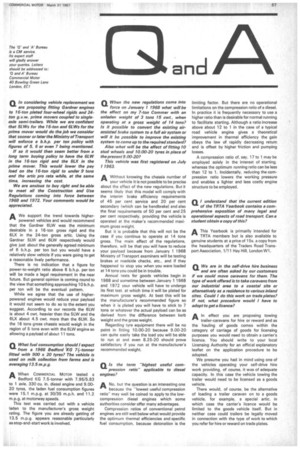Q Is the term "highest useful compression ratio" applicable to diesel engines?
Page 69

If you've noticed an error in this article please click here to report it so we can fix it.
ANo, but the question is an interesting one because the "lowest useful compression ratio" may well be coined to apply to the lowcompression diesel engines which some authorities consider offer many advantages. Compression ratios of conventional petrol engines are still well below what would provide the optimum thermal efficiencies and specific fuel consumption, because detonation is the
limiting factor. But there are no operational limitations on the compression ratio of a diesel. In practice it is frequently necessary to use a higher ratio than is desirable for normal running to facilitate starting. Although a ratio increase above about 12 to 1 in the case of a typical road vehicle engine gives a theoretical improvement in thermal efficiency the gain obeys the law of rapidly decreasing return and is offset by higher friction and pumping losses.
A compression ratio of, say, 17 to 1 may be employed solely in the interest of starting, whereas the optimum running ratio can be less than 12 to 1. Incidentally, reducing the compression ratio lowers the working pressure and enables a lighter and less costly engine structure to be employed.
















































































































